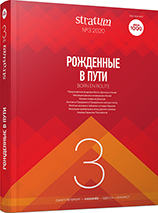Миграции символа: трикветры в культурах эпохи раннего железа степной полосы Евразии
Symbol Migration: Triquetras in Early Iron Age Cultures of Eurasian Steppe Zone
Author(s): Vitaliy K. FedorovSubject(s): History, Archaeology, Cultural history, Ancient World, Migration Studies
Published by: Издательский дом Stratum, Университет «Высшая антропологическая школа»
Keywords: Eurasian steppes; early nomads; symbolic images; triquetra; triskelion;migration;
Summary/Abstract: A sign in the form of three curved branches extending from one point is often seen on weapons, horse harness items, mirrors, jewelry and in petroglyphs. The term ‘triquetra’ is preferable for this sign; the term ‘triskelion’ is possible. It is rarely met in the western part of the steppe zone, and comes here, apparently, from the ancient Greece. It is often seen in the eastern part, especially in Tuva, Altai and in the Minusinsk Hollow. The triquetra came to these regions from north-eastern and north-western Chinese cultures. Several types of triquetras are distinguished. Some of them are met in the vast territory from Eastern Asia to the South Urals, the Lower Volga Region and Central Asia. South Urals triquetras are chronologically younger than those from Eastern Asia. The ‘triquetra migration’ probably occurred together with groups moving from the eastern to the western part of Eurasian steppes.
Journal: Stratum plus. Археология и культурная антропология
- Issue Year: 2020
- Issue No: 3
- Page Range: 191-210
- Page Count: 20
- Language: Russian
- Content File-PDF

